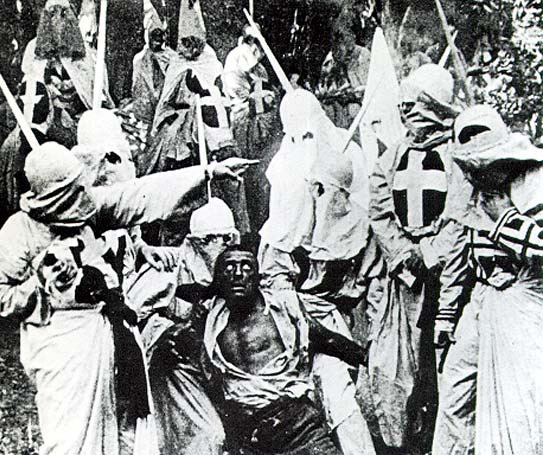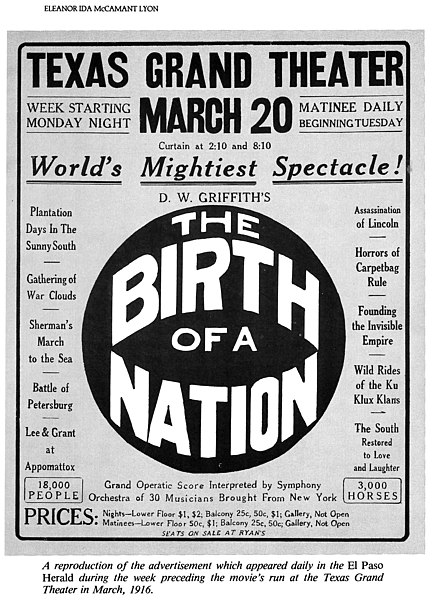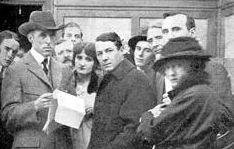We all love blockbuster movies. From the large budget to the big stars, the fast-paced stories, thrilling entertainment, financial success, and all the buzz that surrounds them, blockbuster movies are indeed worth watching and rewatching. While you know blockbusters like Steven Spielberg’s movies “Jaws,” “Jurassic Park,” and “E.T.,” have you ever wondered what is considered the first Hollywood blockbuster? Here, let’s go back more than a century and discover about “The Birth of a Nation,” Hollywood’s first-ever hit movie.
The Birth of A Nation
Released in 1915, “The Birth of a Nation” is a landmark silent epic drama film under the direction of D.W. Griffith, one of the most influential personalities in American motion picture history. The movie was critically-acclaimed for its technical and artistic mastery, being the longest and most advanced film of its time. It’s little wonder that it became the most profitable movie, holding the title as the highest-grossing film before it was toppled by Victor Fleming’s “Gone With The Wind” in 1939.
“The Birth of a Nation” was based on Thomas Dixon’s novel “The Clansman” revolving around the American Civil War and the chaotic Reconstruction Era that ensued. Its plot, both fictional and historic, told the story of Abraham Lincoln’s assassination by John Wilkes Booth, and the impact of the war on the two families: the pro-Union Stonemans of the North and the pro-Confederacy Camerons of the South. The movie was divided into two parts of similar length, separated by an intermission in between.
Griffith started filming on July 4, 1914, and completed it by October the same year. Most of the filming was done on San Fernando Valley’s Griffith Ranch, while the other scenes were shot in Whittier and Ojai Valley, Forest Lawn Memorial Park, and in Big Bear Lake, California.
The iconic and influential director took the helm of Hollywood’s Kinemacolor color studio. He worked with West Point engineers, who provided significant technical advice on the war scenes and beefed up Griffith’s arsenal that he maximized in the film. The movie’s war scenes took influence from the book “Battles and Leaders of the Civil War” written by Robert Underwood Johnson, as well as from “The Soldier in Our Civil War,” “Harper’s Pictorial History of the Civil War”, and from the photographs of Mathew Brady, one of American history earliest photographers.
Griffith’s budget started at around US$40,000, but increased to $110,000, equivalent to $1,112,000 and $3,057,000 in 2021, respectively. With such a huge budget for its film, Griffith made full use of it to revolutionize the film industry. A true master, Griffith also displayed an exceptional feat, keeping the continuity of the film in his head despite a script existing. That’s for a film with over 1,500 shots, during a period when other extravagant movies like the Italian epic silent film from the said year only had less than a hundred.
By the end of the movie’s filming, he shot around 150,000 feet of footage worth 36 hours for a film, eventually cutting it to 13,000 feet, giving the movie its total runtime of just over 3 hours. Editing was consequently done after taking audience reaction and reception of the movie’s early screenings.
Pieces of evidence show that “The Birth of a Nation” initially contained scenes of blacks from West Africa being taken and detained in a slave ship, Northerners’ reaction to the 1860 presidential election outcome, South Carolina under the martial law, a meeting of the Union League, and the passage of the 14th Amendment. Some of these scenes were also cut with New York Mayor John Purroy Mitchel’s insistence due to the movie’s highly racist content.
Truth to be told, “The Birth of a Nation” was extremely controversial even prior to its release, with some even dubbing it as “most atrociously racist film” in the history of Hollywood, and the most controversial movie created in the United States.
The movie received immense outrage with its depiction of the blacks (which were played by white actors in blackface), portraying them as unintelligent, sexually aggressive, the roots of all evil, and undeserving of voting rights and freedom. Additionally, the Ku Klux Klan (KKK) was shown in a heroic light, depicted as a force needed to restore order, and preserve American values, and take hold of white supremacy.
Various demonstrations were held in various cities, mainly organized by the National Association for the Advancement of Colored People (NAACP). Clamors also arose to ban the film. Though the campaign to completely suppress the film didn’t push through, few states and municipalities stopped the film’s showing.
Despite all the opposition and controversies, “The Birth of a Nation” proved to be one of the most famous and commercially-successful films of the silent era. It was distributed nationally in 1914, reaching and having been watched by nearly three million people.
It was also the first motion movie to be shown inside the White House. The screening took place on February 18, 1915, in the East Room, with President Woodrow Wilsome, the members of his family, and his cabinet. Thomas Dixon and D.W. Griffith both attended the momentous event.
Of course, there’s no denying that “The Birth of a Nation” was also a masterpiece and a hallmark in America’s motion picture history. It was the first 12-reel flick ever made, and the first American movie to create a musical score for an orchestra. Another first is that it was the first film to use hundreds of extras, but was able to make it appear like thousands. Moreover, the movie pioneered fade-outs, jump cuts, close-ups, special effects, and other techniques all vital in the movies that succeeded it.
In 1992, “The Birth of a Nation” was recognized for its contribution to the film industry after the U.S. Library of Congress regarded and placed it among the “culturally, historically, or aesthetically significant films” created in the country. In line with this, the movie was chosen to be preserved in the National Film Registry.




